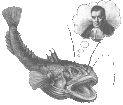UW Aquatic & Fishery Sciences Quantitative Seminar
Brooke Davis
Quantitative Ecology and Resource Management, University of Washington
Linking sockeye escapement to resource accessibility for terrestrial consumers
Abstract
Bristol Bay, Alaska provides vital spawning habitat for the largest sockeye salmon fishery in the world. In addition to their obvious economic value, returning salmon also play important ecological roles upon re-entering freshwater environments, providing important resource subsidies to both freshwater and terrestrial consumers. Recent research has suggested that higher escapement translates into a higher percentage of salmon in bear diets, which may lead to greater bear density. However, persistent observations of partially consumed salmon support the hypothesis that bears become satiated for most of the time salmon are present at escapements above certain threshold levels, and therefore are likely to be time-limited rather than salmon-limited. Additionally, previous work has shown that mobile predators are likely to benefit from among-population variability in run-timing, allowing consumers to travel across the landscape and exploit multiple, discrete, spawning populations in a way that would not be possible if all fish spawned at once. If consumers are time-limited, we cannot only infer benefits to bears based on numerical abundance of salmon alone. Here I present a Bayesian hierarchical model estimating duration of salmon availability to consumers and how it is related to total escapement. The model assumes normal arrival time distributions and uses a stream life model to estimate escapement from in-stream counts. The stream life model integrates two sources of mortality as a function of entry date, and is fit to in-stream lifespans observed in tagged spawners.

